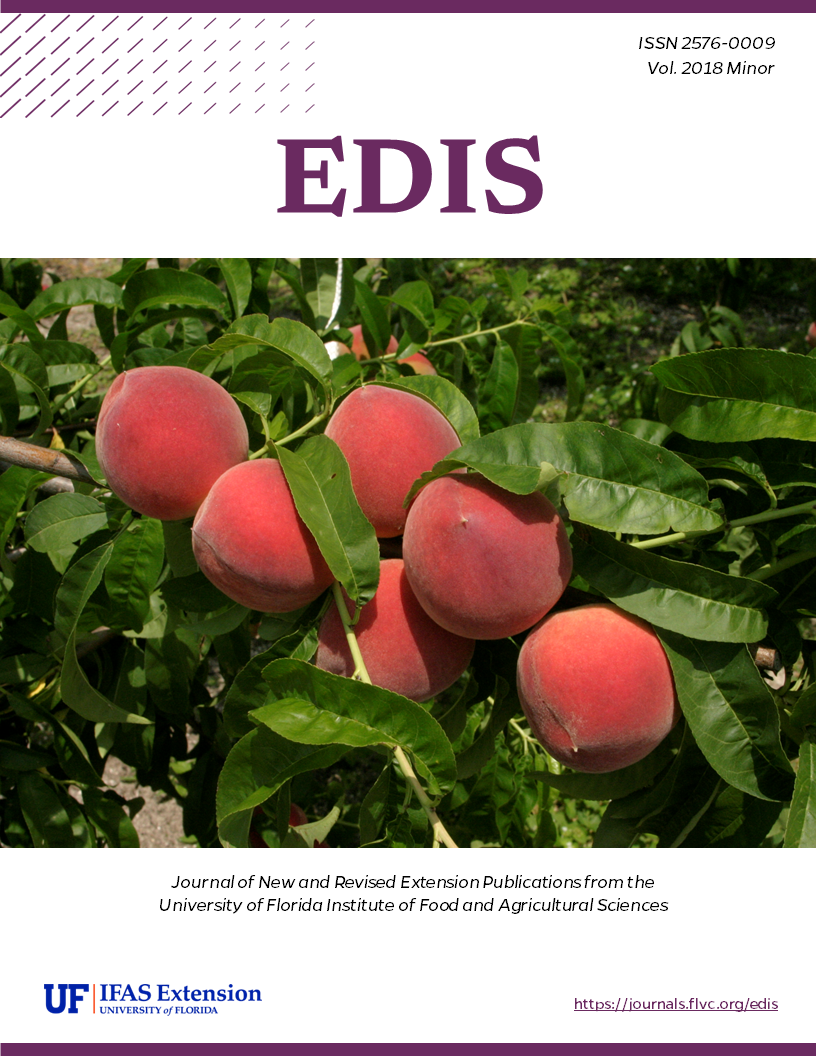Abstract
There are many peach diseases that can affect fruit quality and the marketability of the produce. Blemishes to the skin or within the flesh can be a reason to reject an entire fruit load or significantly reduce the purchasing price.
Peach scab is a disease caused by the fungus Cladosporium carpophilum (Figure 1). The pathogen can infect twigs, leaves, and fruits, where it can cause lesions that can affect fruit quality, marketability, and in extreme cases can cause cracking of the fruit and premature fruit drop. Peach scab is typical during periods of humid weather because rain splashes the conidia (asexual spores) from the fungus between leaves, twigs, and fruit in the tree canopy, which spreads the disease. This pathogen can infect other fruits and nuts within the Prunus species, like almonds, apricots, nectarines, and plums.
This 6-page fact sheet is a minor revision written by Daniel Mancero-Castillo, Ali Sarkhosh, Mercy Olmstead, and Phillip Harmon, and published by the Horticultural Sciences Department, August 2018.

